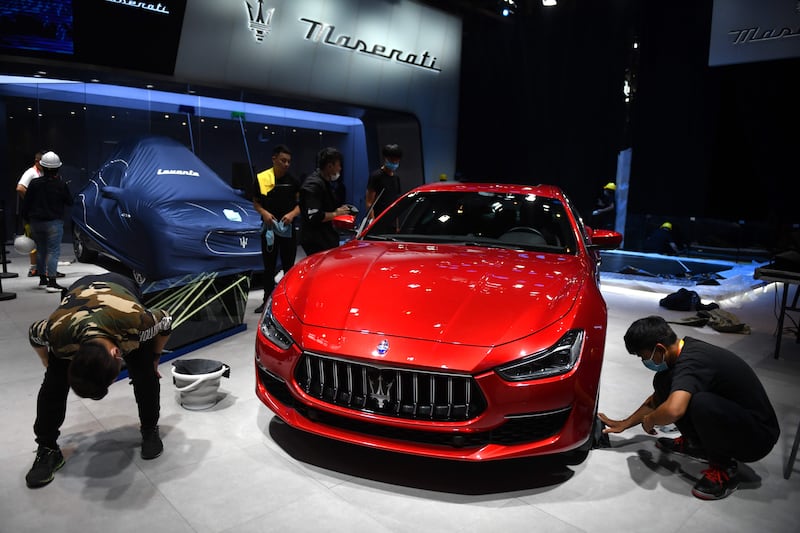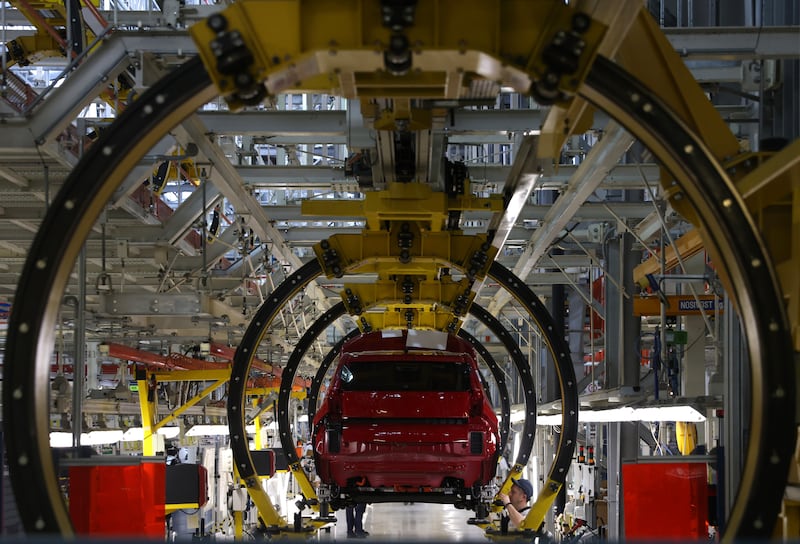Car enthusiasts can breathe a sigh of relief – Maserati is not actually on the chopping block, it seems.
The rumour mill surrounding Maserati’s potential demise had started when the chief executive of the sprawling Stellantis Group, Carlos Tavares, had said in an earnings call with investors that any of the group’s underperforming brands would be shut down or sold off. Tavares’s stark warning was: “If the brands don’t make money, we’ll shut them down.”
Tavares is known, perhaps even renowned in the industry, for being a savage cutter of costs, and the fact that Maserati continues to lose money – €76 million last year – and continues to underperform in sales terms relative to rival brands such as Ferrari and Porsche certainly made it look as if Tavares was setting the famed Trident badge up for a fire sale.

Not so, at least according to an official statement from Stellantis Group, which said: “Stellantis restates unwavering commitment to Maserati’s bright future as the unique luxury brand of the 14 Stellantis brands.” That gives Maserati a stay of execution for now, at least, but for how long can Tavares’s patience be stretched?
READ MORE
It’s not as if Maserati was once a turner of huge profits. The company is one of the oldest car makers, having been founded in 1914 by the Maserati brothers: Carlo, Alfieri, Bindo, Ettore and Ernesto. The brand was built around racing in its early days, winning the Targa Florio race in Sicily and then going on to be the only Italian marque to win the Indianapolis 500. Postwar, Maserati became one of the great Grand Prix constructors, and its gorgeous 250F racer – often named as the best-looking racing car of all time – took the greatest of drivers, Juan Manuel Fangio, to his greatest victory in the 1957 German Grand Prix.
While Maserati was also building fame as a maker of some of the most beautiful and rapid road cars, it was in management and financial terms a basket-case. Ownership changed from the Maserati family to the Orsi family in 1937, which kept hold of the reins through Maserati’s 1950s and 1960s glory days, before selling to Citroën in 1968. Things went well until the 1973 oil crisis, which flattened Maserati’s sales and say Citroën put the company into liquidation, it being only saved at the last minute when Argentinian businessman Alejandro de Tomaso bought it for pennies.
[ Audi’s new A6 e-tron boasts a 756km rangeOpens in new window ]
De Tomaso began to share components between his eponymous car company and Maserati, making most Maseratis effectively badge-engineered de Tomasos for a time. Eventually the 1980s, Maserati launched the boxy-but-quick BiTurbo coupe, a model which would remain in production well into the 1990s in various guises.
By 1993 de Tomaso was prepared to sell up, and Fiat bought Maserati. It has remained ever since within Fiat, and latterly Stellantis, but its fortunes have ping-ponged around as managers sought magic-bullet solutions to improving its sales prospects. At one point Maserati was effectively the junior partner to Ferrari. Next it was aligned with Alfa Romeo. Next, it was given a line-up of saloons and SUVs. Little wonder that customers stayed away.

Maserati is far from Tavare’s largest problem. He has said in an interview with Bloomberg that “the auto industry is in turmoil”, and he must try to find a balance of investment and cost control that will improve the prospects of the Stellantis Group as a whole. The group’s net income has fallen 48 per cent, and product teams are scrambling to try to pull back on electric car promises, and make more of the hybrids that customers currently prefer.
The group has invested huge sums in the creation of the new STLA family of electric car platforms, only to see predictions – especially in Ireland – that the hybrid-engine versions, which rely on a decade-old 1.2-litre petrol engine design, will outsell the battery versions by some considerable margin. Fiat engineers are racing to develop a hybrid-engine version of the 500e electric hatchback, just to give dealers something they can actually sell.
In Irish terms, Stellantis is represented here by Gowan Auto, part of the wider Gowan Group, but 2024 so far has proven a difficult year with falls in sales for all of the brands sold here – Peugeot, Citroën, Opel, DS, Fiat, and Alfa Romeo – with Jeep being the only exception, but only thanks to a small increase on a small number of 2023 sale.
[ New Volkswagen Golf review: Updated and spruced up, and all the better for itOpens in new window ]
Stellantis must also try to find a rational way to balance the appeal and sales of its closely matched brands. Peugeot, Citroën, Opel/Vauxhall, and Fiat are all aimed at the same set of family car buyers. Jeep should be a roaring success, given that it makes only SUVs, but the brand has yet to take off in a meaningful sense in Europe, and its sales have flagged in the US, where previously the company could barely keep up with demand. Maserati is aiming at a very narrow gap between Porsche and Ferrari in the sports and supercar market, while Alfa Romeo still has its work cut out if it’s going to grow to become a genuine Audi and BMW competitor. Meanwhile DS – spun off as a brand in itself, having previously been a posh Citroën – seemingly doesn’t know what to do with itself. Abarth continues to make niche sporty versions of the Fiat 500, Lancia is on the comeback trail, Chrysler and Dodge continue to see their US market shares erode, while the Ram pickup and commercial vehicle arm is being criticised for poor quality. Finally, there’s the 15th Stellantis brand – Leapmotor, a Chinese maker of electric cars, which is being prepped for a worldwide launch.
That’s a vastly tougher job than that faced by Renault – which has to balance only itself, Dacia, and Alpine – Ford – which has no subsidiary brands in Europe – and VW – which has some internecine brand conflict between Volkswagen itself, Skoda, and Seat, but hitherto has been able to rely on Porsche and Audi to prop up its profits.
Those days may be coming to an end, though. Audi’s sales have fallen of late, and Porsche is making noises about its profits coming under pressure this year. If even the master of brand management strategy – VW – is struggling to cope with nine passenger car brands, how will Stellantis cope with half as many again?
- Sign up for push alerts and have the best news, analysis and comment delivered directly to your phone
- Join The Irish Times on WhatsApp and stay up to date
- Listen to our Inside Politics podcast for the best political chat and analysis






















